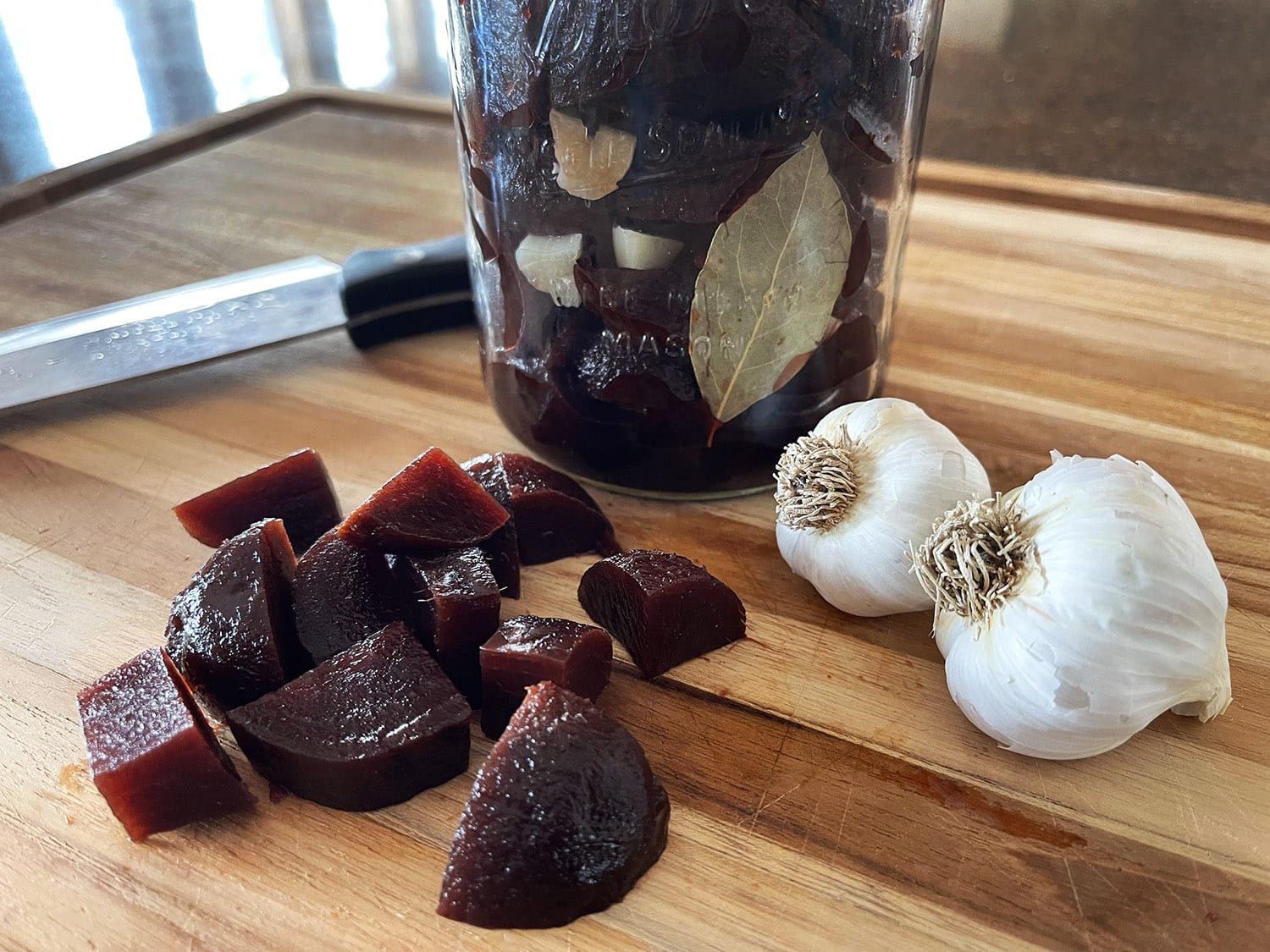I didn’t grow up eating beets. They weren’t served in my house, so I was an adult before I “discovered” them.
Beets first came on my radar when I tried them at a vow renewal ceremony I attended with my then-future husband. He was raving about the roasted beets served at the reception buffet, and I didn’t want to admit that I’d made it to my 30s and never tried them (and probably wouldn’t have without the gentle peer pressure).
Holy smokes, had I been missing out. Beets are da bomb.
Besides the fact that they’re straight-up delicious lightly sautéed in ghee with a couple of cloves of garlic and a bit of salt and pepper (mmmmmm), beets are also incredibly nutritious.
Beta vulgaris rubra is a good source of fiber, folate, vitamin C and minerals such as potassium, manganese and iron, not to mention antioxidant compounds such as carotenoids, phenolic acids and flavonoids. Beets are one of the few vegetables that contain a group of highly bioactive pigments known as “betalains,” which have demonstrated high antioxidant and anti-inflammatory capabilities in both in vitro and in vivo studies.
They also may be really good for your heart. Beetroot is full of natural nitrates that convert to nitric oxide in the body. You’ve probably heard of the link between nitric oxide and hearth health. In an oversimplified nutshell, nitric oxide plays a key role in vasodilation, which relaxes the vessels, makes the blood less “sticky” and allows adequate blood flow throughout the body. A reduction in overall blood pressure reduces wear and tear on the blood vessels, thus improving endothelial integrity, which is a major risk factor in cardiovascular disease.
Nitric oxide is produced by nearly every cell of the human body. It is a critical signaling molecule that affects virtually all of our body’s physiological functions, from cardiovascular health, to immune function to wound healing.
Unfortunately, nitric oxide synthesis and bioavailability tends to decrease as we age, so for those of us who have been around the block a couple of times, it makes sense to supplement with outside sources.
One way to supplement nitric oxide is to get more UVA radiation via natural sunlight.
Another strategy involves supplementing with nitric oxide precursors L-arginine and L-citrulline.
Another is to eat more delicious beets.
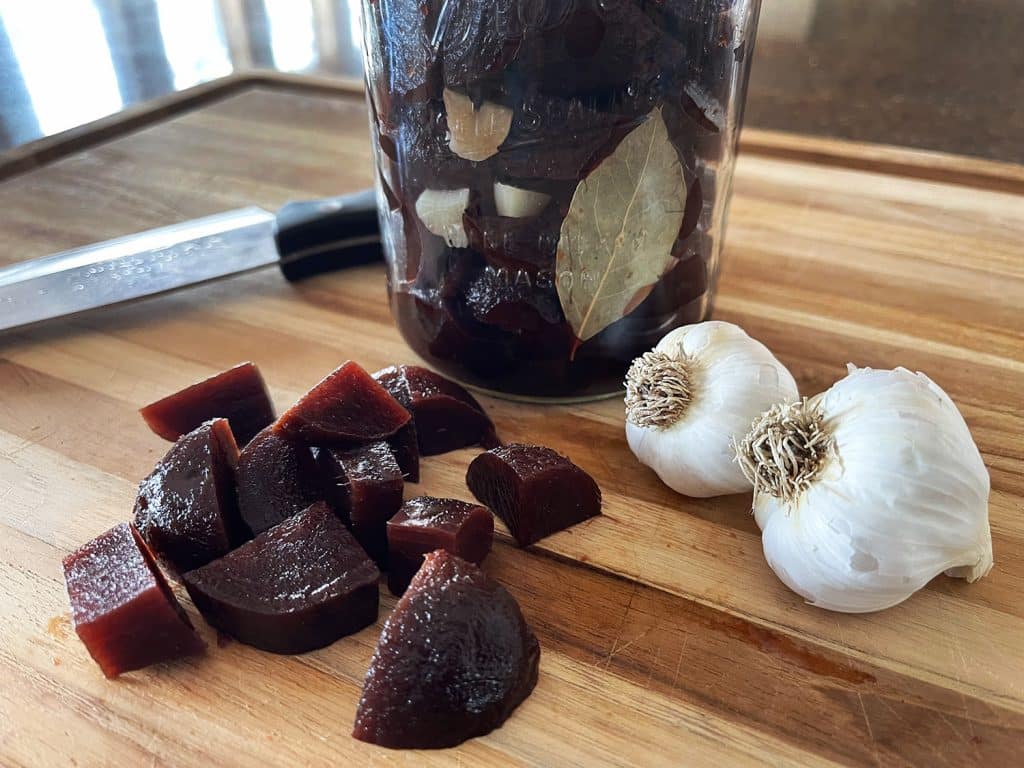
Fermented beets
Fermenting your vegetables may be THE BEST thing you can do for restoring and maintaining your gut health.
In addition to the standard perks that come with the act of transforming a vegetable into a probiotic food rich in beneficial microbes, fermenting beets also reduces oxalates, which improves the bioavailability of minerals. It preserves the beet’s vitamins C and reduces its sugar content as the lactic acid bacteria consumes beet sugar during the fermentation process.
Fermenting also stabilizes and preserves the precious betalains we talked about earlier. Studies suggest that lacto-fermentation can preserve betalain levels for up to a month with no degradation.
Raw vs cooked
Beets may be fermented raw or cooked. The fermented beet recipe in the Weston A. Price cookbook Nourishing Traditions uses cooked beets. In Wild Fermentation, Sandor Katz’s ‘sour beets’ recipe uses raw beets. I think this is primarily a flavor and texture preference. Cooking softens the beets and brings out the sweet, while raw beets retain a firmer texture and an earthier flavor (that is also great).
Raw beets have plenty of natural microbes of their own, so all you need is water and salt to get a ferment started. A consideration when using cooked beets, is while they *may* still have some natural microbes, it likely won’t be enough to ferment predictably. In this case, you’ll need to inject a bit of microbes to jump-start the culture. Nourishing Traditions recommends whey.
Personally, I don’t care for whey in vegetable ferments. Don’t get me wrong — whey tastes great in cultured milk products, but to me, it tastes wrong in veggie ferments. The taste difference is due to the different bacterial strains. Both methods cultivate lactic acid bacteria (aka lacto-fermention), and while there is some overlap, the microbes that make up a milk culture aren’t the same ones that grow naturally on vegetables.
So my preference here is to use a bit of fermented sauerkraut juice or brine from another live vegetable ferment to inoculate my [cooked] beets.
I haven’t tried this myself so I can’t speak to how well this works, but supposedly, you can also use raw apple cider vinegar with the mother to start the ferment.
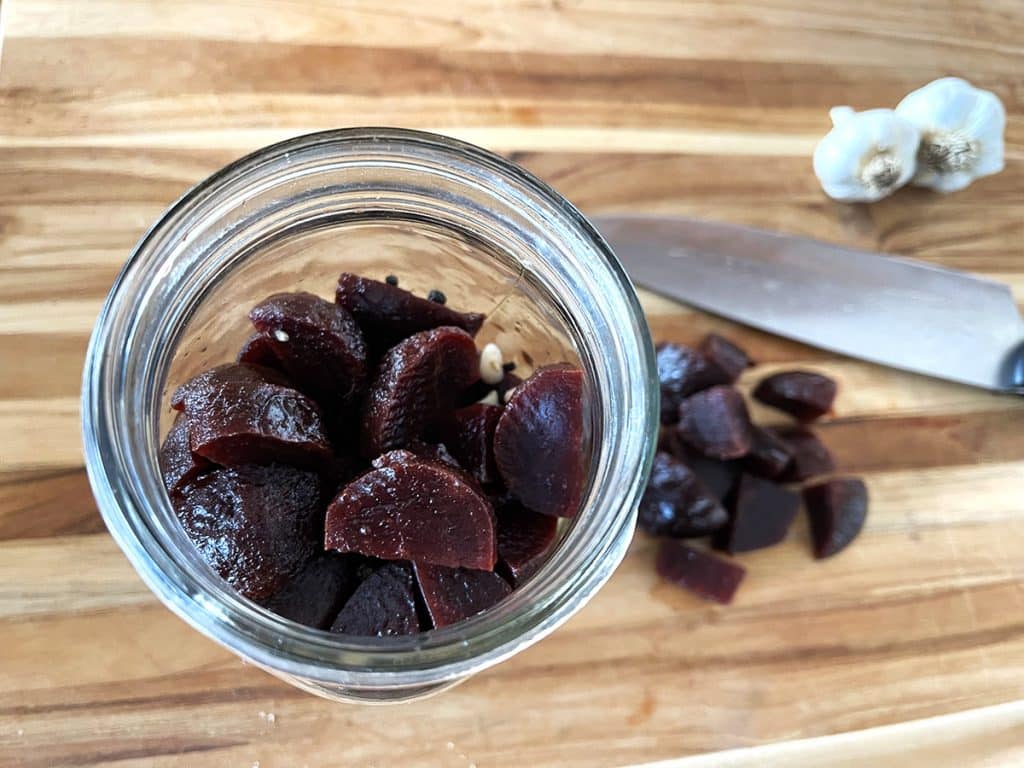
Cooking the beets (or not)
I’m all about taking shortcuts where it makes sense, doesn’t cost and arm and a leg and doesn’t sacrifice quality. These super-convenient, pre-cooked organic beets are sold in shrink-wrapped packages at most grocery stores. You can pick them up in bulk at Costco and sometimes discounted through online vendors like Misfits Market, Imperfect Foods or Thrive Market.
Yes, 5 pounds of raw organic beets can be had from your local farmer’s market or from Azure Standard for under $10, and that’s obviously ideal, but you don’t have to let ‘perfect’ be the enemy of ‘good’. If your family prefers cooked beets and you KNOW you simply won’t get around to making them if you have to do it all from scratch, then don’t!
When you’ve already got a lot on your plate, sometimes time is worth more than a little extra money. You’ve got options.
Oven method:
- Preheat oven to 400F.
- Trim off stems and leaves and rinse off the beet root. (Save the beet greens to use in your next soup or salad!)
- Place beets in a 9×13” baking dish with about 1” of water.
- Cook uncovered for about 45 minutes for medium beets. Very large beets may take an hour or more.
- Remove from oven and allow the beets to cool completely before trying to handle them.
- Peel off the skins by rubbing them; the skins should come off easily. Pro tip: Do this in a clean sink under running water to avoid staining half your kitchen bright pink.
Faster Instant Pot method:
- Trim off beet stems and leaves and rinse off the root.
- Place beets on a trivet inside the Instant Pot liner along with a cup or two of water. Cook a few beets or pile them up to the ‘max’ line, the choice is yours.
- Cook under high pressure for 22 minutes for medium-sized beets. Add or subtract 5 minutes if you have small or very large beets. If you have a variety, cut your largest beets in half to approximate the smaller sizes. In either case, allow a natural pressure release for about 15 minutes.
- Cool and peel as above.
Quick & lazy method:
- Unwrap precooked organic beets.
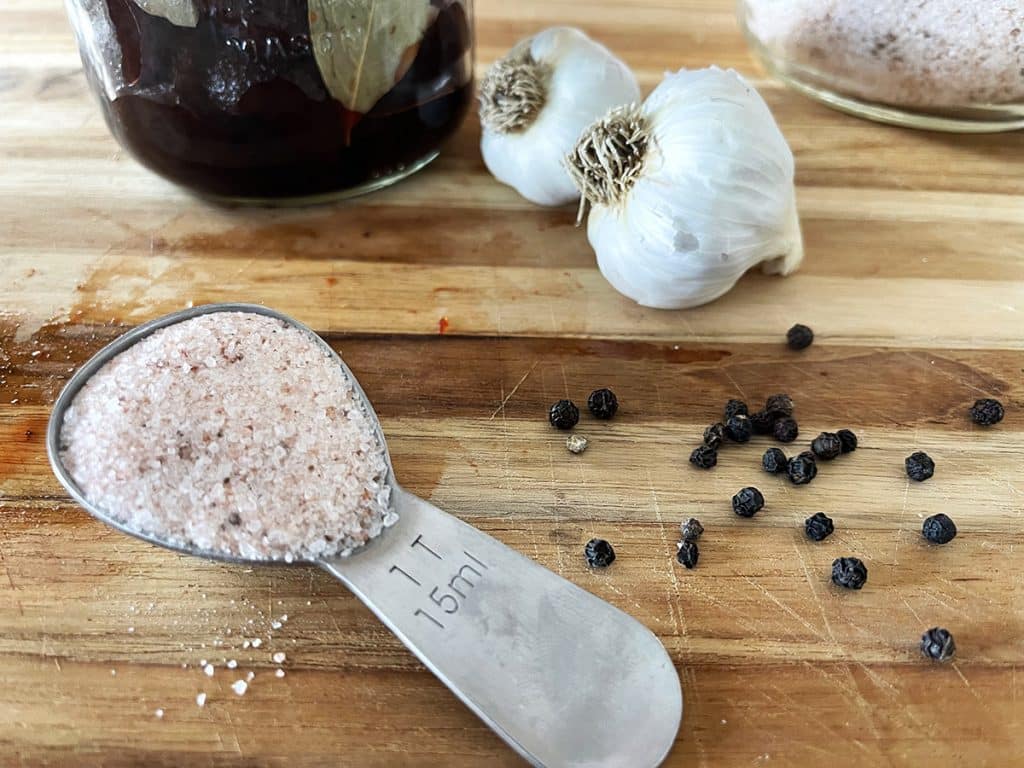
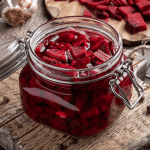
Quick Fermented Beets
5 Stars 4 Stars 3 Stars 2 Stars 1 Star
No reviews
Ingredients
1 1/2 lb precooked beets (I used slightly more than two 8.8 oz packages of Love Beets)
1/4 c live sauerkraut brine (or brine from other live vegetable ferment)
1 tsp black peppercorns
3–4 cloves garlic, sliced
1 bay leaf
Instructions
- Cut precooked beets into 1″ cubes, and fill a 1-quart mason jar to just below the threads.
- Add salt, spices and sauerkraut juice; fill the rest of the way with filtered, non-chlorinated water, leaving approx. 1″ of head space.
- Use a fermentation weight to hold the beets beneath the brine.
- Cover jar with an airtight lid or an airlock. If you choose not to use an airlock, be sure to “burp” the jar daily to prevent too much pressure buildup.
- Place the jar in a shallow bowl or tray to catch any potential overflow and let it ferment at room temperature for 3 days before transferring to cold storage. If your kitchen is on the cooler side, the ferment may take a bit longer.

